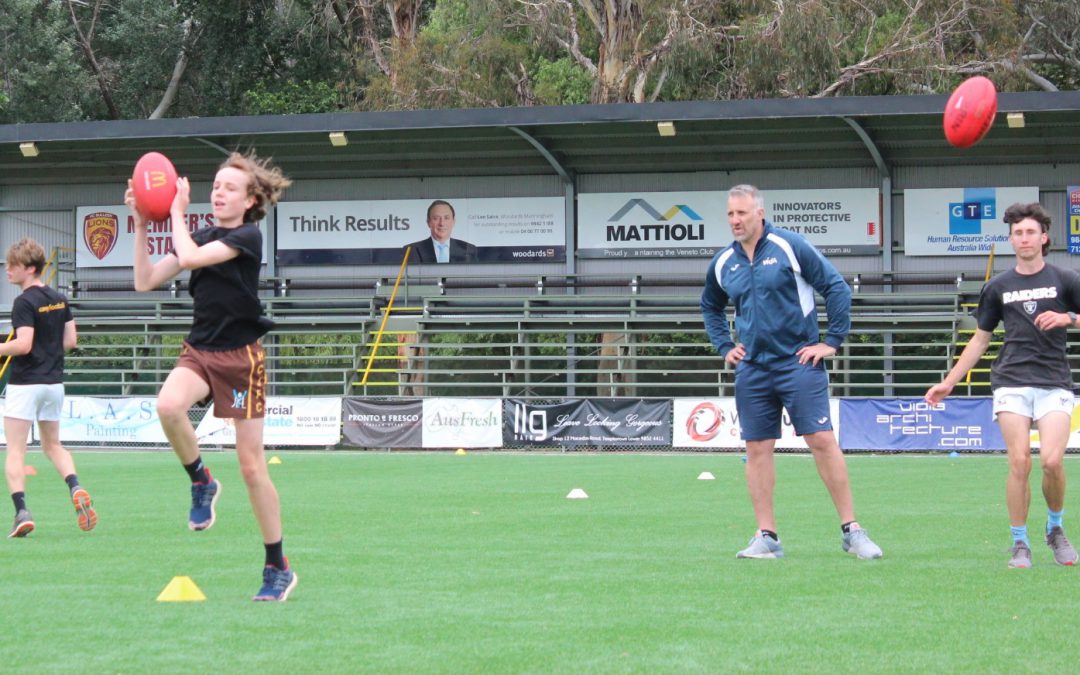Welcome back to our insightful look into Anthony Rocca’s article about contested marking. If you have not read the first one we recommend you click here to catch up on the story. Today’s second installment will cover the other two important factors in taking a contested mark.
Body positioning/Strength:
It might appear to be an oxymoron but the best-contested marking players more often than not mark the ball un-contested. The best do their work in the lead up to the contest so they can gain a metre or two on their opponent or trap them under the ball to mark with little pressure.
Constant movement is critical. This does not allow a defender to get set or believe that he has mastery over the jostle for best position.
(Movement also enables a forward to become a bigger or more available target for team-mates. Movement ought to equal multiple leads and adjustments that provide options for team-mates and draw defenders and defences out of position.)
So where does the strength come from?
Gaining the best body position in a contest doesn’t necessarily mean you have to use a lot of strength. It’s about shifting the defender enough to get both hands to the ball unrestricted. Unexpected contact with the opposition is always the best contact, for it puts them off balance and doesn’t give them time to set their feet and weight, to activate their strength.
The feet, legs and arms play an important part in contested marking.
The feet need to be quick to set up, plant and spread for balance. The foot closest to the defender needs to be grounded as early as possible or at least before the opponent has the chance to get set. Once these foundations are set in place, with the back leg akin to an anchor, the leg closest to the opponent will drive into the legs and allow you to push up into the opponent to force the opponent away from the drop of the ball.
The arms can assist in this role by being strong and stiff; the ideal spot for the arm is under the opponent’s armpit. From here the arm and closest leg can be used as one to create the maximum amount of power.
A mistake marking players often make is to allow their front arm to collapse or drop to an area where it is either trapped or cannot source functional strength. Arm positioning is a point neglected by many and an area of significant potential improvement.
Clean Hands:
So you have done all the hard work.
You understand how your teammates will dispose of the ball, you have used the strength in your feet, legs and arms to shift your opponent out of position and away from the drop zone and all you need to do now is mark the ball.
One clean grab is all it needs.
You want to release both hands from the contest. This will give you the greatest chance of marking the ball. Freeing your hands is obviously important for a clean take is very difficult without both hands being available.
Clean and strong purchase on the ball as it arrives is equally important. Thumb positioning, with both thumbs spread to halt the flight of the ball, like a safety net, and fingers spread to wrap around a majority of the football are needed.


